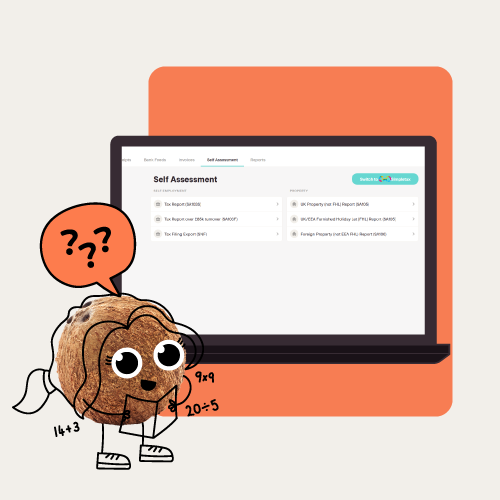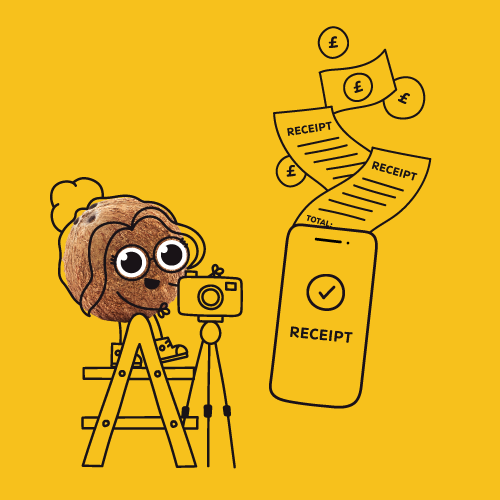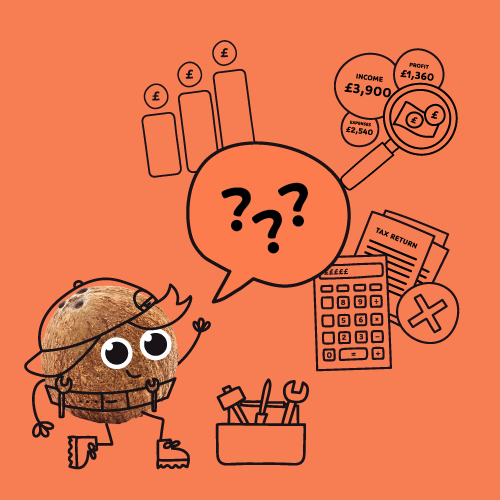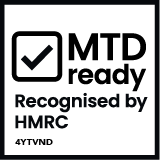Despite your best intentions, you may not have completed your Self Assessment tax return yet. That’s fine… Kind of... Until you realise that the online-filing deadline is midnight on the 31 of January. Gulp. Not long now. Double gulp. You begin to sweat and feel a bit sick as a horrible sense of panic sets in. So, what should you do about it?
1. Stop panicking about your Self Assessment tax return
Although it’s not recommended, many people leave their Self Assessment tax return until January – you’re not the only one. In 2023, some 800,000 people actually filed their Self Assessment tax return on 31 January, with 36,000 of them filing in the final hour before midnight (which really isn’t recommended).
Panicking isn’t going to solve anything. And it means you’re more likely to do nothing out of fear, rush or make bad decisions. In any case, if you’re already registered for Self Assessment, you still have enough time to get your Self Assessment tax return completed and filed.
Did you know? On average, with due preparation, it only takes between two and three hours to complete a Self Assessment tax return (including supplementary pages – see 4). More experienced people can get it done in under an hour. All of a sudden there probably seems less reason for you to panic.
2. Pick the right time and place to do your tax return
Decide when you’re going to complete your Self Assessment tax return. Commit to do it as soon as possible – don’t leave it until just a few days (much less hours)before the online filing deadline. Who needs that additional pressure?
In advance, if you collect together all of the information you need (see 3), you should be able to complete your Self Assessment tax return in one session, lasting no more than three hours or so. If you take a “stop and start approach”, doing bits of your tax return here and there, it will take you longer.
Distractions(even minor ones) will also inevitably mean that you take longer to complete your Self Assessment tax return. That’s why you also need to pick the right place, somewhere you won’t be disturbed, somewhere that’s quiet, calm and comfortable.
Top tip! Never rush when doing your Self Assessment tax return, because mistakes will be more likely. Pace yourself and be methodical. Also leave yourself enough time to check through your tax return at the end.
3. Get your Self Assessment tax return information together
Assuming that you’re already registered for Self Assessment (if not visit GOV.UK to find out how to register), gather together all of the information you need to complete your Self Assessment tax return. This will enable you to fill out your Self Assessment tax return in much less time.
● You’ll need your ten-digit UTR (Unique Taxpayer Reference) number, which enables HMRC to identify you as a taxpayer. You’ll find it in previous tax returns and tax correspondence HMRC has sent you.
● You’ll also need your National Insurance number (it can be found in your Personal Tax Account, the HMRC app or previous payslips or P60s).
● You’ll also need details of all UK taxable income you’ve received within the tax year, which could include income from self-employment, employment (your P60 will show details of in come and deductions), rental income, share dividends, pensions, savings interest, state benefits, capital gains from selling taxable assets, tips and commission.
● In each income area, you’ll also need summaries of tax expenses you wish to claim via Self Assessment.
● If you’ve paid into any pension schemes, you’ll also need those details.
4. Let Coconut accounting software do its thing
If you already use Coconut to record your taxable income and expenses from your business, rental income or other sources, getting the summary figures you need to enter into the relevant supplementary pages of your tax return will be very quick and easy. Literally, you only need to click on the relevant button within Coconut to view or send the figures that you need to complete the necessary supplementary pages.
What if you’re not a Coconut user? Well, becoming one is very quick and easy, and you can connect it to your bank account and pull through your income and expenses transactions, which means you too could very quickly have the summary figures that you need to complete your Self Assessment tax return.
Need to know! Supplementary pages are additional tax return pages that detail specific types of taxable income and expenses. They each have a number that refers to an income source (eg SA105 –UK property income, SA103S or SA103F – self-employment/sole trader, SA106 –non-UK income or gains, etc). You file your supplementary pages with the main eight-page Self Assessment tax return (SA100).
5. Use Self Assessment tax return-filing software
You can complete and file your Self Assessment tax return online via GOV.UK. You’ll need to sign in using your Government Gateway user ID and password. However, the only online guidance you’ll get will come from notes HMRC publishes, which may or may not be helpful.
Another option that thousands of people choose is to use commercial Self Assessment tax return-filing software. This can make things much easier and quicker. All you do is you specify the taxable income you need to report and the software loads up the necessary supplementary pages. You’re guided through sections of the tax return that you need to complete, while automatic prompts are designed to prevent you from making mistakes.
Using Self Assessment tax return-filing software really does make the task much easier, which saves you lots of time. The likely cost is about £90 for a yearly subscription, which is significantly cheaper than paying an accountant to complete your tax return for you. You may even find ways to reduce your tax bill thanks to the software.
Coconut plus GoSimpleTax – a winning partnership!
Coconut is now fully integrated with award-winning Self Assessment tax return filing software GoSimpleTax. So, very quickly, easily and conveniently, income and expense summary information from your Coconut software can be transferred into GoSimpleTax, making it even easier to complete your Self Assessment tax return. When you use Coconut and GoSimpleTax, there really is no need to panic when it’s time to complete your Self Assessment tax return – even if you do leave it until January!
GoSimpleTax is award-winning software that makes it quick and easy to complete and file your Self Assessment tax return and supplementary pages. It can also prevent you from making basic tax return errors that can later cost you time and money. All this for just £55 (or less) a year! Thousands of sole traders, landlords and others trust and love GoSimpleTax. Start your FREE trial today! Sign up to GoSimpleTax within your Coconut account under the 'Self Assessment' tab.











